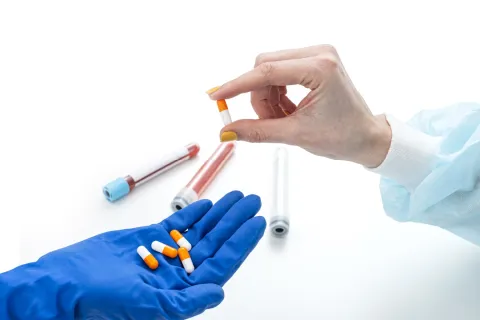Pharma Labeling Compliance Services - Overview
Labeling is an interdisciplinary function that serves as the basis for prescribing information, advertising, and promotional materials for medication. Similarly, biopharmaceutical product labeling is a complex process that involves multiple products and markets for different formulations and dosages, maintaining Pharma Labeling Compliance throughout the process.
Tracking and harmonization of labeling information to effectively maintain the safety and efficacy of a drug is essential for pharmaceutical companies. A robust labeling system should ideally include a defined process, tracking tools, and well-trained labeling professionals upholding the practices of pharma labeling compliance.
Freyr has extensive experience in setting up and implementing labeling compliance processes, creating Core Patient Information Leaflets (Core PIL), and auditing the existing labeling setups to ensure Regulatory labeling compliance.
By leveraging our Pharma Labeling Compliance Services, clients gain the advantage of proactive monitoring, risk mitigation, and seamless coordination between Regulatory and operational teams to maintain compliance across all markets.
Pharma Labeling Compliance Services
Strategy Consulting
- Business/Process/Technology strategy consulting
- Global label management Standard Operating Procedure (SOP) creation
- Audit consulting, preparedness assessment, and support
- Label management business process consulting
Technology Consulting & Implementation
- Insight-driven, innovative technology consulting
- Global label management technology development & implementation
- Freyr offers comprehensive medicine labeling compliance services, including strategic consulting and technology implementation for global Regulatory adherence
Operational Support
- Core data sheet authoring, review, and approval coordination
- CDS impact on local labels and local label updates
- Global label change management
- Signal impact assessment
- Manage and update the global label management tool
- Track potential impact on ROW labels
- Establish a process to track changes in timely submissions (based on urgent/non-urgent timelines
- Track implementation status
- Track submission timelines
- Harmonize safety information
- Identify internal and external signal detection and innovator label changes (signal management)
- Assess the safety updates and signals from one region/country and their impact on other regions/countries
- Assess the safety & non-safety updates across markets
- Creation of Core Patient Information Leaflet (Core PIL)
- Comprehensive Pharma Labeling Compliance Services integrating strategy, technology, and operations for global labeling consistency

- Resources with in-depth Regulatory knowledge
- Expertise in successfully handling global and regional drug labeling compliance for Fortune pharma clients in the USA, Europe, APAC, MENA, etc.
- Global Regulatory expertise in assisting life sciences organizations, viz. pharma, biotech, and nutrition manufacturers
- Highly qualified medical writers with extensive experience in developing compliance labels
- In-depth and updated understanding of the global drug labeling changes from multiple health authorities, such as the US FDA, EMA, TGA, etc.
- Dedicated team tracking the status of Core and Company Core Data Sheet (CDS/CCDS) implementation in regional labels
- Highly experienced pharmaceutical, biotech, and nutrition labeling professionals
- Unparalleled expertise in developing and maintaining compliant labeling for pharmaceutical products worldwide








